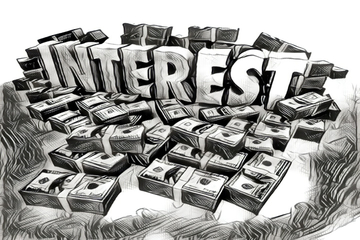Grade 4 Lesson 3: Interest
Interest is a very important concept to understand in #finance. The simplest way to understand interest is as below:
Suppose you go to a #bank and open and #account. Then you #deposit $1000 into that #bankaccount. Note that you have taken your own #money, which is an #asset for you, and "given" it to the bank by putting in their account. The bank can now use your money to do its #business. To use this money, the bank will likely pay you something. This #payment made by the bank to you is called #interest
Typically, the bank will tell you upfront how much interest it will pay you as a percentage. This percentage is called the #rate of interest. This #rateofinterest or #interestrate is variable and can change from time to time.
A couple of examples to understand this better:
- I go to a bank and deposit $1000. The bank tells me what it will give me an interest of 5% per year. Thus at the end of the first year, I will have a total of my original $1000 + 5%*$1000 = $1050. As you can see, my money has grown by just leaving it in a bank account for a specific time.
- Similar situation to the above but due to an emergency, I need to take my money out from the bank in 6 months. So I go to the bank and ask them - "can I get my money back? and how much will I get". The bank tells me "you will get your original $1000 back. If you had kept your money with us for the full year, you would have received an additional $50 as interest. But since you are taking the money out in 6 months, you will get half of $50 i.e. $25. So you will get a total of $1025"
As you can see, the interest depends on 3 factors:
- The amount you have originally invested (called the principal)
- The rate of interest
- How long has the investment been made i.e. duration
All the above examples are of what we call #simpleinterest. Next time, we will talk about one of the important topics in #financialliteracy, #compoundinterest

ayu ecosystem #kids #education